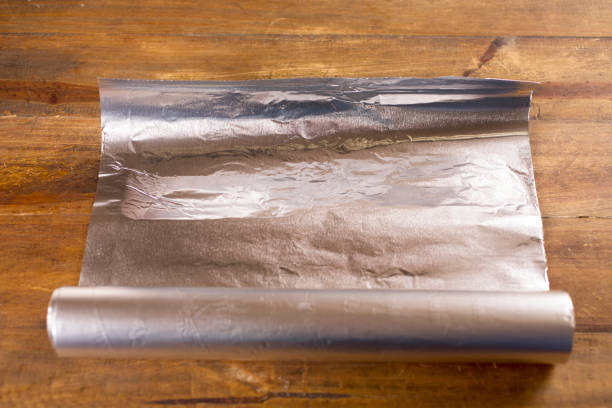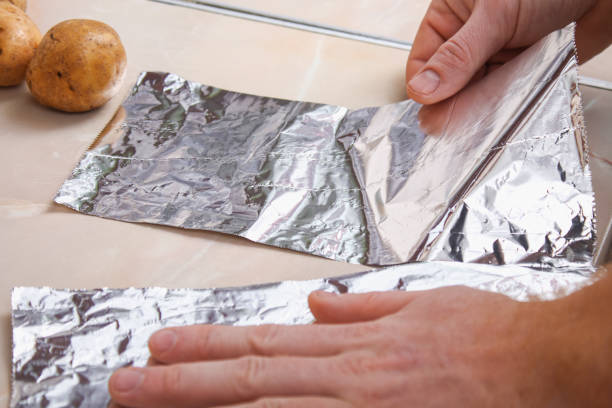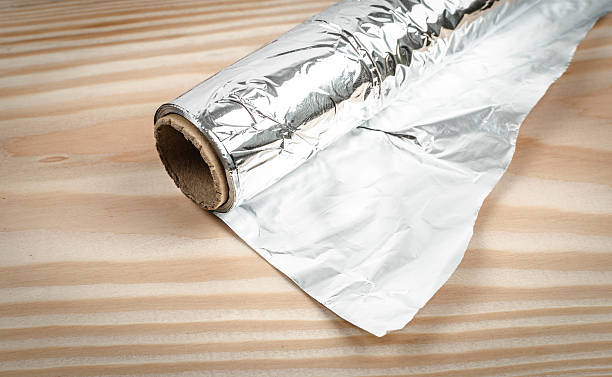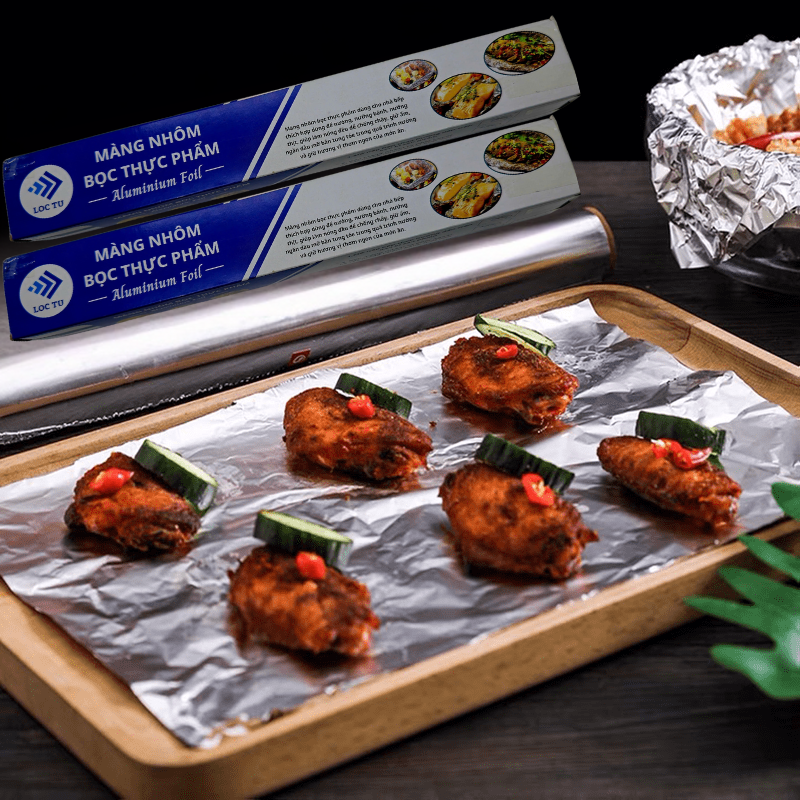THE MAKING OF ALUMINUM FOIL: FROM EARTH TO YOUR KITCHEN
TABLE OF CONTENTS
THE GLEAMING ENIGMA IN YOUR DRAWER: UNRAVELING THE ORIGINS OF ALUMINUM FOIL
FROM RED EARTH TO REFINED METAL: THE ALCHEMICAL TRANSFORMATION OF BAUXITE
THE ROLLING REVOLUTION: HOW ALUMINUM IS PRESSED INTO IMPOSSIBLE THINNESS
INSIDE THE FOIL: COMPOSITION, PURITY, AND THE MYTH OF THE SHINY SIDE
THE SCIENCE OF STRENGTH AND SHINE: KEY PROPERTIES THAT MAKE FOIL INDISPENSABLE
A MATERIAL MARVEL: REFLECTING ON THE JOURNEY OF ALUMINUM FOIL
THE GLEAMING ENIGMA IN YOUR DRAWER: UNRAVELING THE ORIGINS OF ALUMINUM FOIL ✨📜
It resides in nearly every kitchen drawer, a familiar roll of shimmering silver, ready at a moment's notice to wrap, to roast, to protect. Aluminum foil. We reach for it instinctively, its utility almost an extension of our culinary subconscious. But have you ever paused, mid-tear, to ponder its humble beginnings? What is aluminum foil made of, truly? This seemingly simple sheet, so pliable yet so resilient, embarks on an extraordinary journey before it graces our homes. It’s a story of geological time, intricate chemistry, and remarkable engineering.
This exploration is an invitation to look beyond the everyday. We will trace the path of aluminum foil from its raw, earthen state to the sophisticated material we know and trust. It’s a narrative that intertwines geology, metallurgy, and manufacturing prowess, revealing that the gleaming roll in your hand is far more than just a thin sheet of metal. It's a testament to human ingenuity and the remarkable properties of one of Earth's most abundant elements. Prepare to unwrap the science behind this indispensable kitchen ally.

(Image Suggestion 1: A dramatic, almost artistic shot. One half shows a piece of raw, reddish-brown bauxite ore. The other half shows a pristine, unfurling roll of shiny aluminum foil. A subtle visual line or gradient could connect the two, symbolizing the transformation. Caption: From Earth's Embrace to Culinary Essential: The Astonishing Journey of Aluminum Foil.)
Pull Quote: "The story of aluminum foil is a testament to how science and industry can transform a common element into an everyday marvel of versatility and convenience."
FROM RED EARTH TO REFINED METAL: THE ALCHEMICAL TRANSFORMATION OF BAUXITE ⛏️🔥
The genesis of almost all aluminum foil lies deep within the Earth's crust, in a reddish-brown, clay-like rock called bauxite. This ore, rich in aluminum oxides, is the primary raw material. The journey from this raw state to the pure aluminum needed for foil is a multi-stage process, an alchemical transformation refined over centuries.
The Bayer Process: Extracting Alumina's Purity
The first crucial step is the Bayer process, designed to extract aluminum oxide (alumina) from the bauxite ore. This involves crushing the bauxite and then dissolving it in a hot, caustic soda (sodium hydroxide) solution. This selective dissolution separates the aluminum compounds from other impurities like iron oxides (which give bauxite its reddish color) and silica. After a series of filtration and precipitation steps, a fine white powder emerges: alumina (Al₂O₃). This highly purified aluminum oxide is the vital intermediate.
The Hall-Héroult Process: Liberating Aluminum Through Electrolysis
Pure alumina then embarks on its next transformation via the Hall-Héroult process, an energy-intensive electrolytic reduction. The alumina is dissolved in molten cryolite (a sodium aluminum fluoride mineral) at extremely high temperatures (around 950°C or 1742°F). A powerful electric current is then passed through this molten bath. This current breaks the strong chemical bonds in alumina, liberating pure, molten aluminum metal, which collects at the bottom of the electrolytic cell. Oxygen is released and reacts with carbon anodes, producing carbon dioxide. This process, independently discovered by Charles Martin Hall in the U.S. and Paul Héroult in France in 1886, revolutionized aluminum production, making it an affordable and widely available metal. This is the core of the aluminum foil manufacturing process.
FROM EARTH'S CRUST TO KITCHEN ROLL: A SIMPLIFIED JOURNEY
1. Mining Bauxite Ore: The raw, reddish-brown rock is extracted.
2. Refining to Alumina: Bauxite is purified into a white powder (aluminum oxide) via the Bayer process.
3. Smelting to Aluminum: Alumina is smelted into pure aluminum metal through the Hall-Héroult electrolytic process.
4. Casting into Ingots/Slabs: Molten aluminum is cast into large blocks.
5. Rolling into Foil: These blocks are then repeatedly rolled to achieve the desired thinness.

(Image Suggestion 2: A diptych. Left side: A sample of bauxite ore. Right side: Gleaming ingots or a large slab of pure aluminum. A visual arrow or flow chart element could connect them, labeled "Bayer & Hall-Héroult Processes." Caption: The Alchemical Path: Transforming raw bauxite ore into pure aluminum through sophisticated refining and smelting processes.)
THE ROLLING REVOLUTION: HOW ALUMINUM IS PRESSED INTO IMPOSSIBLE THINNESS ⚙️📏
Once pure aluminum is obtained, the next marvel of engineering begins: transforming solid ingots or slabs into the incredibly thin, flexible sheets we recognize as foil. This is achieved through a meticulous and powerful rolling process.
Hot Rolling: The Initial Shaping
Large aluminum ingots, often weighing several tons, are first heated to make them more malleable. They are then passed repeatedly through enormous, powerful hot rolling mills. Each pass reduces the thickness of the slab, elongating it into a coil. This initial hot rolling stage significantly reduces the aluminum's thickness and prepares it for the more delicate cold rolling process.
Cold Rolling: Achieving Microscopic Thinness
The coils from the hot rolling mills are then transferred to cold rolling mills. In this stage, the aluminum is rolled at room temperature (or slightly cooled) without preheating. The rolls in these mills are highly polished and exert immense pressure. The aluminum is passed back and forth between these rolls, with the gap between them progressively narrowed. This process not only thins the metal dramatically but also increases its strength and improves its surface finish.
The Doubling Technique and the Two Sides of Foil
To achieve the thinnest gauges of foil (like typical household foil, often around 0.016 mm or 16 micrometers), a fascinating technique is employed. In the final rolling pass, two layers of foil are often rolled together simultaneously. This "doubling" prevents the extremely thin foil from tearing under the immense pressure. The side of each sheet that comes into contact with the highly polished steel rollers becomes shiny. The side that is in contact with the other aluminum sheet during this final pass remains matte or duller. This explains why is aluminum foil shiny on one side and dull on the other. The difference in finish is purely a result of the manufacturing process and typically has no significant impact on its cooking performance. This is a key aspect of how aluminum foil is made.

(Image Suggestion 3: A dynamic, slightly blurred image or a stylized illustration of large industrial rollers in action, with a sheet of aluminum passing through them, becoming visibly thinner. The immense power and precision should be conveyed. Caption: The Rolling Marvel: Immense pressure and precision engineering transform solid aluminum into ultra-thin, versatile foil.)
INSIDE THE FOIL: COMPOSITION, PURITY, AND THE MYTH OF THE SHINY SIDE 🔬💡
So, what exactly is the final aluminum foil composition that ends up in our kitchens? And does the much-debated shiny versus dull side truly matter?
The Purity of Food-Grade Aluminum
The vast majority of aluminum foil intended for food contact, often labeled "food grade," is made from very high-purity aluminum. Typically, this means the aluminum content is 99% or higher. Common alloys used for foil might include small, controlled amounts of other elements like iron and silicon to enhance specific properties like strength or formability, but these are carefully regulated. The primary concern is to ensure that the foil is inert and does not react adversely with food under normal cooking conditions (bearing in mind the caveats for highly acidic or salty foods discussed previously in other contexts). This high purity of kitchen foil is crucial for its safe use.
Understanding "Alloys" in Foil (If Applicable)
While "pure" aluminum is the base, sometimes specific aluminum alloys in foil are used for particular applications. For instance, some heavy-duty foils might have a slightly different alloy composition to give them extra strength and puncture resistance. However, for standard household foil, the emphasis is usually on high aluminum purity.
The Shiny vs. Dull Side: Dispelling the Myth
As explained by the rolling process, the difference in sheen between the two sides of most aluminum foil is a byproduct of manufacturing, specifically the final pass where two layers are rolled together.
* Shiny Side: This is the side that was in contact with the polished steel rollers.
* Dull/Matte Side: This is the side that was in contact with the other sheet of foil.
For most cooking applications, there is no significant functional difference between using the shiny side or the dull side to face the food. While the shiny side is marginally more reflective of radiant heat, this difference is usually negligible in a home kitchen environment. The primary factor determining cooking performance is the foil's ability to conduct heat and create a sealed environment, not its surface finish. So, feel free to use whichever side you prefer, or whichever side happens to be facing up when you unroll it!
THE SCIENCE OF SHINE AND STRENGTH: KEY PROPERTIES
* Composition: Primarily high-purity aluminum (often >99%).
* Thickness: Varies (e.g., household foil ~16µm; heavy-duty ~24µm).
* Surface Finish: One shiny side, one matte side (due to manufacturing).
* Key Properties: Excellent thermal conductivity, good reflectivity, impermeability to light, moisture, and gases, non-toxic (when food-grade), lightweight, and highly malleable.

(Image Suggestion 4: A split image. Left side: A microscopic or stylized view of the aluminum's atomic structure, emphasizing purity. Right side: A clear illustration showing how two layers of foil pass through rollers, resulting in one shiny (contact with roller) and one matte (contact with other foil) surface. Caption: Purity and Process: Understanding the composition of aluminum foil and the origin of its dual-sided finish.)
A MATERIAL MARVEL: REFLECTING ON THE JOURNEY OF ALUMINUM FOIL 🌟🌍
From the raw, unassuming bauxite ore extracted from the earth, through energy-intensive refining and smelting processes, to the powerful, precise rolling mills that press it into impossibly thin sheets – the journey of aluminum foil is a remarkable feat of science, engineering, and industrial innovation. What arrives in our kitchen as a simple, convenient roll is, in fact, the culmination of a complex and sophisticated manufacturing chain.
Its unique combination of properties – lightweight yet strong, impermeable yet malleable, an excellent conductor of heat yet a good reflector of radiant energy – makes it an almost magical material for a myriad of applications, particularly in the culinary world. It has silently revolutionized how we cook, store, and transport food, offering solutions that are both practical and, when used responsibly, relatively sustainable due to aluminum's high recyclability.
So, the next time you unfurl a length of that familiar gleaming foil, take a moment to appreciate the intricate journey it has undertaken. It’s more than just a kitchen tool; it’s a small piece of scientific and industrial artistry, a testament to our ability to harness the elements and transform them into an everyday marvel that simplifies and enhances our lives. The story of what aluminum foil is made of is a story of human ingenuity itself.

(Image Suggestion 5: An inspiring, panoramic shot perhaps showing a montage: from a bauxite mine, to an aluminum plant, to a rolling mill, culminating in a beautifully prepared dish being presented, where foil played a key role in its creation. The image should convey a sense of scale and the entire journey. Caption: A Material of Marvel: Aluminum foil's journey from raw earth to a versatile culinary essential is a testament to human ingenuity and scientific advancement.)
Loc Tu: Pioneering Excellence in Premium Aluminum Packaging Solutions
At the forefront of the food packaging industry, Loc Tu Manufacturing & Trading Co., Ltd. stands as a premier manufacturer and supplier of high-quality aluminum trays and foil rolls. We are dedicated to providing innovative, safe, and reliable packaging solutions tailored to the dynamic needs of the modern food landscape. Our foundation is b0uilt upon state-of-the-art manufacturing facilities, equipped with advanced production lines engineered for precision and efficiency. This technological edge allows Loc Tu to consistently deliver aluminum trays and foil rolls that not only meet but exceed rigorous international food safety standards.
Why Choose Loc Tu:
✅ Assured Quality & Safety: Crafted from premium, food-grade aluminum, free from harmful impurities, meeting international safety benchmarks.
🔥 Optimal Thermal Properties: Ensures even cooking and excellent heat retention, preserving food temperature and taste effectively.
💪 Durable & Convenient Design: Engineered to resist leaks and dents, providing reliable performance for baking, storage, and transport.
🔄 Versatile Solutions: Our extensive range caters to various applications – from baking and steaming to storing fresh food and takeaway meals.
🌱 Eco-Conscious Packaging: Made from 100% recyclable aluminum, supporting sustainability and reducing plastic waste.
🎯 Brand Enhancement: Optional custom printing available to personalize products and boost your brand visibility.
🚚 Reliable Supply & Delivery: Capable of handling large orders with dependable, on-schedule nationwide shipping.

Your Trusted Partner in Food Packaging 📞
Loc Tu Manufacturing & Trading Co., Ltd. is more than just a supplier; we are your strategic partner in delivering high-caliber aluminum food packaging solutions. Specializing in a comprehensive range of aluminum trays, versatile foil rolls, and convenient disposable food containers, we serve a diverse clientele – from individual households and local food vendors to large-scale restaurants, catering companies, and prestigious hotel chains. Our unwavering dedication to safety, sustainability, innovation, and customer satisfaction makes us the trusted choice for businesses and consumers seeking reliable, high-performance packaging.
📌 LOC TU MANUFACTURING & TRADING CO., LTD
📌 Website: ALUMINUMFOILVN
📌 HOTLINE/ZALO: +84.969.787.309
📌 Facebook: Khay nhom thuc pham
📌 Youtube: Khay nhom thuc pham Loc Tu
📌 Tik Tok: Khay nhom Loc Tu
📌 Shopee: Khay nhom thuc pham Loc Tu
📌 Telegram: Khay Nhom Thuc Pham Loc Tu
📌 Whatsapp: +84.969.787.309
📌 Branch 1 (Hanoi): No. 1 Pham Tu, Beasky Building, Dai Kim Ward, Hoang Mai District, Hanoi
📌 Branch 2 (Binh Duong): No. 68, DX 051 Street, Group 17, Quarter 4, Phu My Ward, Thu Dau Mot City, Binh Duong Province
📞 Contact us today for expert consultation and the best pricing on premium aluminum trays, foil, and food packaging solutions! 🚀





